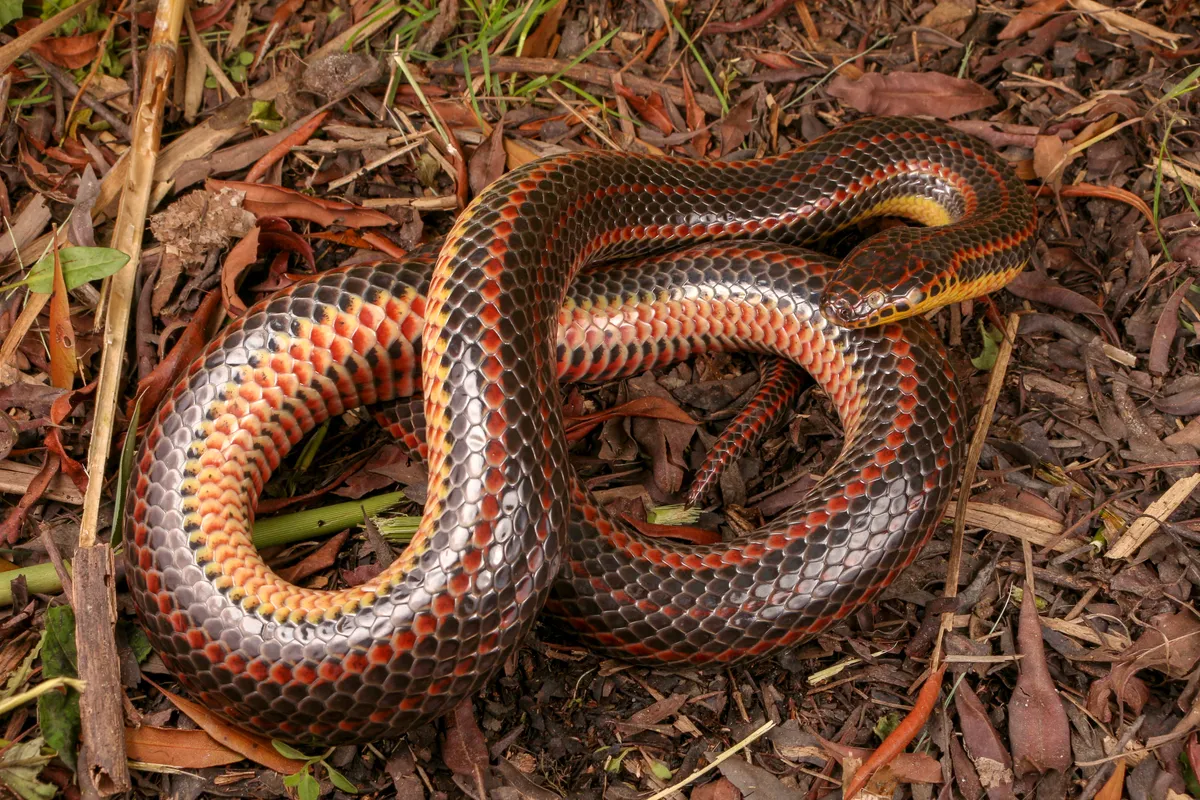
Posted on 08/22/2025 8:43:35 AM PDT by Red Badger
Despite its distinctive and bright markings, the rainbow snake has been spotted only once in Florida in the last 56 years.

Any information regarding rainbow snake populations are vital for conservation efforts.
Image credit: Marioxramos / Wikimedia Commons CC BY-SA 4.0
Florida wildlife officials are turning to the public to help locate one of the state’s most elusive reptiles, the rainbow snake (Farancia erytrogramma). This distinctive, nonvenomous species has seen its population steadily decline, with only one sighting recorded since 1969, which has left biologists scrambling to piece together clues about its current whereabouts.
Last seen in February 2020 by hiker Tracey Cauthen in the Ocala National Forest, the Florida Fish and Wildlife Conservation Commission (FWC) is once again asking locals and people visiting the area to keep their eyes peeled for signs of this incredibly flashy snake.
With an iridescent black or violet-blue body, a bright yellow and red underside, and three distinctive red stripes along its back, it’s surprising the species is so rarely seen. They typically reach 90 to 122 centimeters (3 to 4 feet) in length and don’t resemble any other native snake species. They’re semi-aquatic, so are expected to be seen around bodies of water, including rivers, springs, and marshes.
“Every sighting report gives us valuable data about their current distribution and helps us assess the health of the species in Florida,” said Kevin Enge, Research Scientist with FWC’s Fish and Wildlife Research Institute. “We need help from Floridians and visitors to better understand where rainbow snakes still occur in the state.”
The lack of sightings comes as a result of several factors driving the rainbow snake’s population decline in Florida. Feeding primarily on American eels, the decline in eel populations in Florida waters is affecting available food sources for the rainbow snake. Additionally, habitat loss and pollution are impacting the snake’s ability to survive in their native habitats throughout the Florida Panhandle, parts of the northern peninsula along the St. Marys River drainage, St. Johns River drainage, and Suwannee River drainage.
Officials have also noted the threat from snake fungal disease, a deadly fungal infection that causes lesions on the snake’s skin. Snake fungal disease is increasing rapidly among the wild snake population in the US, putting the rare rainbow snake and many other threatened snake species at risk.
Because rainbow snakes are so elusive, every bit of potential data helps. Photos, location, and the date of a sighting all contribute to building a clearer picture of the species' status. This data is crucial for mapping current populations, monitoring their health, and guiding conservation efforts.
The FWC is asking anyone who thinks they’ve seen a rainbow snake to report it via its website, ideally including a photo for verification. Even reports that seem minor could reveal vital information about habitat spread or small, overlooked populations.
Last seen in short shorts, rollerskating at Miami Beach, and it looked Fabulous!
It would match the 10 Autumn Gold bun warmers we got for our wedding in 1970. And the avocado shag carpet.
If I saw it, I would probably assume it is a garter snake and just leave it be. When it comes to non-venomous snakes (that aren’t a large constrictor), I’d rather have them around than the rodents they eat.
Doesn’t it taste a little like chicken?
Probably being eaten up by pythons and invasive lizards.
One of the few idiots which have moved from Florida to NY?
Yep.....she's a rainbow.
He only comes out for Pride Month, so he’s back in the closet now.
Well, it’s pretty.
If my wife sees it, it’s dead!.................
Disclaimer: Opinions posted on Free Republic are those of the individual posters and do not necessarily represent the opinion of Free Republic or its management. All materials posted herein are protected by copyright law and the exemption for fair use of copyrighted works.